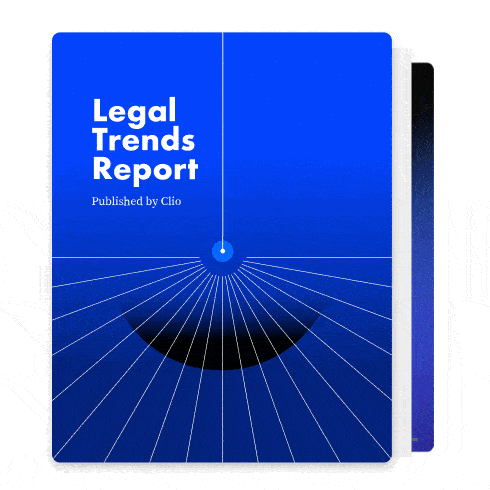Is demand for legal services dropping after a solid post-pandemic recovery in 2021?
As noted in our 2023 Legal Trends for Mid-Sized Law Firms report, law firms of all sizes initially saw the demand for legal services drop during the COVID-19 pandemic. They quickly recovered—and even increased their casework beyond pre-pandemic levels—in 2021, likely due to economic recovery. However, our research observed a slowing of growth in 2022.
Now, a recent study from Wells Fargo’s Legal Specialty Group suggests that this drop in demand for legal services is continuing through 2023.
Below, we’ll outline the highlights from Wells Fargo’s report and how law firms can respond to a potentially slowing legal market.
Highlights from Wells Fargo’s Legal Specialty Group Report
For its report, Wells Fargo’s Legal Specialty Group surveyed over 100 law firms, including 68 of the United States’ top 100 highest-grossing law firms. Their findings, as reported by Reuters, included the following.
Demand for legal services has dropped
The firms surveyed reported a 1.9% drop in demand for legal services based on the number of hours lawyers billed. The top 50 highest-grossing law firms surveyed saw an even more significant drop, equating to 2.9%.
Lawyers are billing less
According to reports, lawyers at the top 100 firms logged 102 fewer billable hours in 2022 than in 2021. This drop equates to approximately 1,568 hours billed per lawyer per year.
Revenue is up; net income is down
Overall, for the law firms surveyed, revenue grew by 3% in 2022 while net income dropped by 3.1%. While not explicitly stated by Reuters, this outcome suggests that an increase in expenses and costs (possibly factored in by inflation) may be significantly impacting firms’ operating costs.

Demand for legal services and the 2023 Legal Trends for Mid-Sized Law Firms report
While the Wells Fargo report looked at Big Law firms, we’ve seen the same trends arising for firms of smaller sizes. Our 2023 Legal Trends for Mid-Sized Law Firms report provided similar findings regarding the state of the legal industry by comparing the performance of mid-sized law firms (defined as firms with 21 or more employees) with smaller law firms (those with 20 or fewer employees).
Notably, the demand for legal services has slowed after a strong recovery in 2021—particularly among larger firms. Despite decreased demand, however, firms of all sizes appear to be billing and collecting more relative to 2019. In essence, they’re collecting more while doing less work.
How? By raising their rates.
Since 2020, the hourly rates among firms have steadily increased (likely in response to the COVID-19 pandemic and costs resulting from rising interest rates and inflation).
By the end of 2022, mid-sized firms raised their rates by 17%, while smaller firms (those under 20 employees) raised their rates by 11% compared to 2019. At the same time, the Consumer Price Index (CPI) increased by 16%—meaning that mid-sized firms are actually outpacing the CPI.
These increases may represent a larger trend across the legal industry, as indicated by the increase in revenue noted by Wells Fargo among larger firms despite the decreased demand for legal services.

You may like these posts
Navigating decreased demand for legal services
Research suggests that many firms are navigating a period of decreased demand for legal services—amidst heightened inflation—by raising their hourly rates significantly. And while this strategy appears to be working in some cases, we don’t recommend rate hikes for every law firm. For instance, smaller law firms that service the general public may alienate their client base with rate increases. Consider a range of factors when determining how to weather a downturn.
Navigating decreased demand for legal services will ultimately look different for each law firm and require a multi-pronged approach. Our guides on The Building Block of an Anti-Fragile Law Firm and Lawyers and Inflation: Staying Competitive in an Inflationary Economy are great places to start developing your plan.
Some strategies will be relevant to most—if not all—law firms, though. For example, ensure that your law firm has an adequate emergency fund to navigate a period of decreased demand.
In other cases—particularly among smaller firms that service individual clients—consider methods to set your firm apart from the competition. Providing client-centered services, such as alternative payment arrangements, can support existing clients while differentiating yourself from the competition with prospective clients.
Finally, don’t overlook the power of technology. All-in-one legal software like Clio Manage can help firms reduce the time spent on routine tasks, so they can focus on servicing clients and billing efficiently.
Watch How Law Firms Use Clio to see how Clio customers use our software to become more productive, efficient, and profitable.
We published this blog post in September 2023. Last updated: .
Categorized in: Business
Explore AI insights in our latest report
Our latest Legal Trends Report explores the shifting attitudes toward AI in the legal profession and the opportunities it brings for law firm billing, marketing, and more.
Read the report





